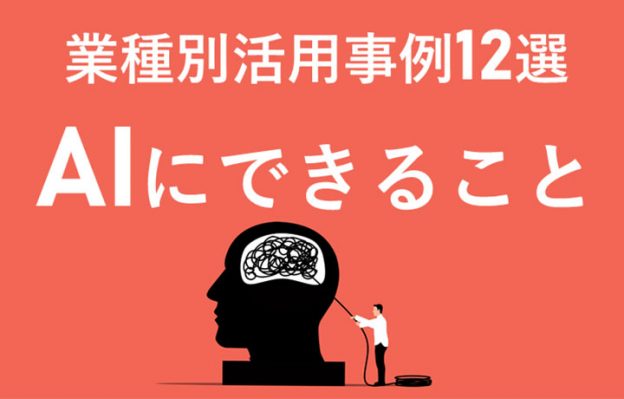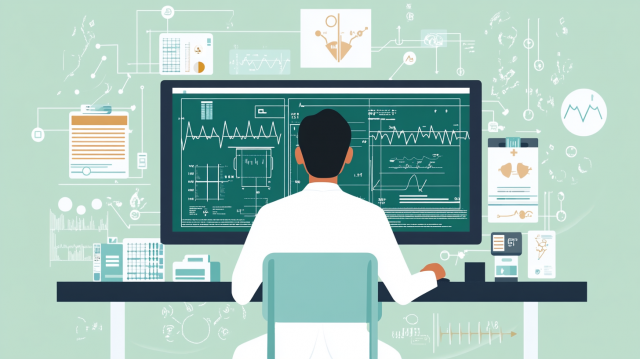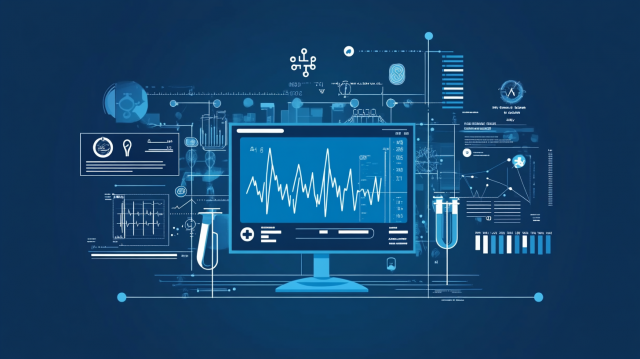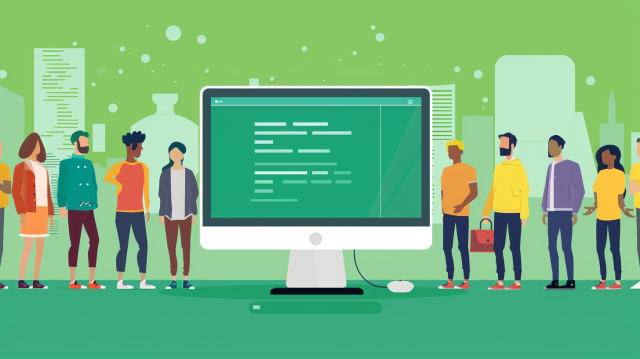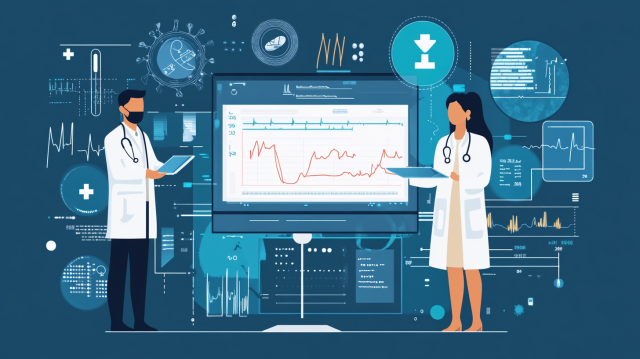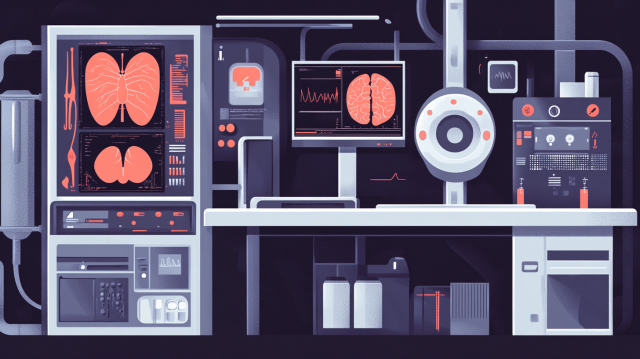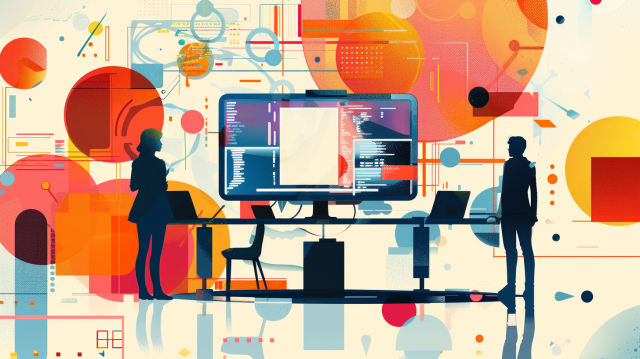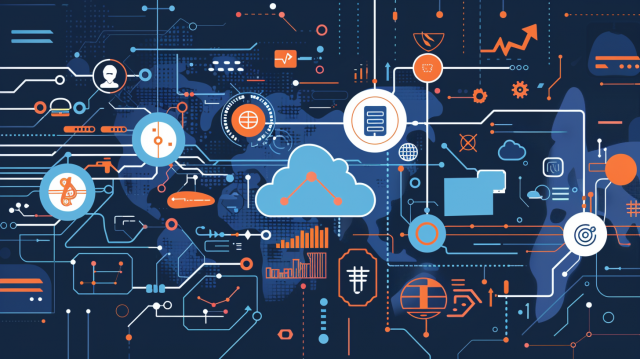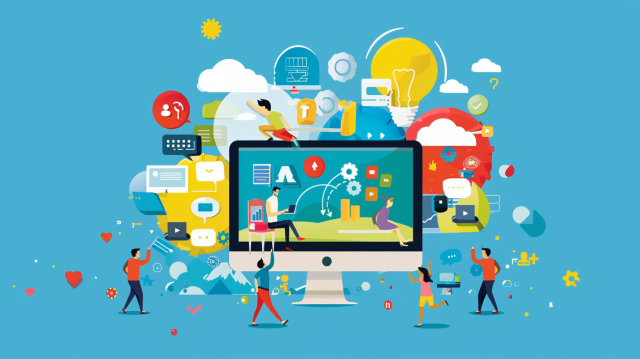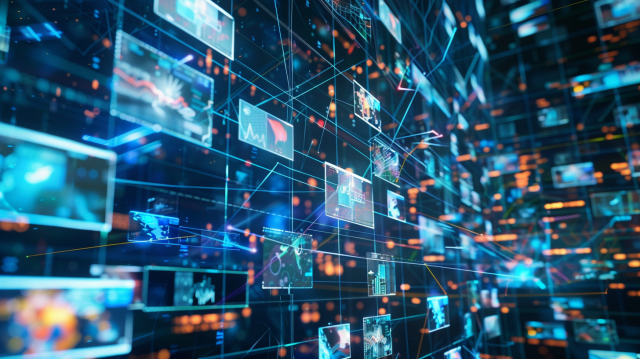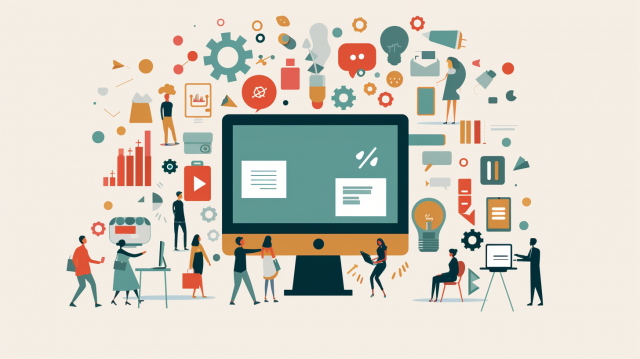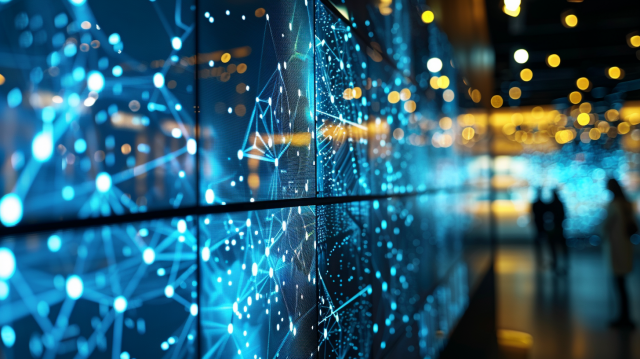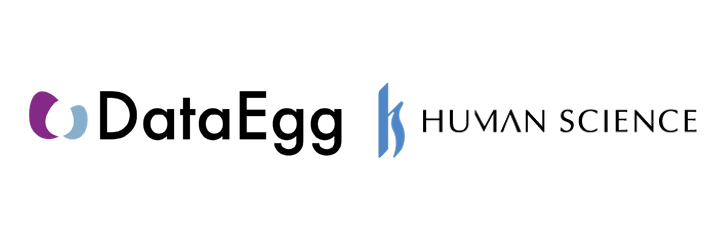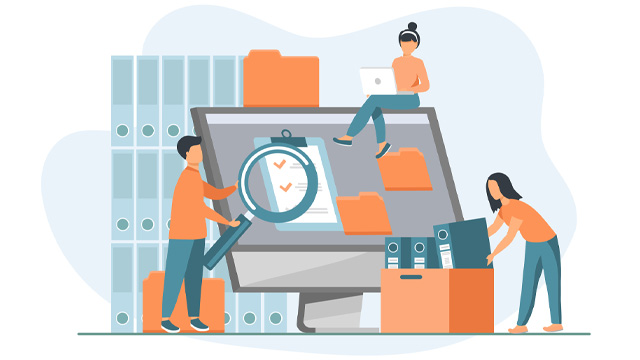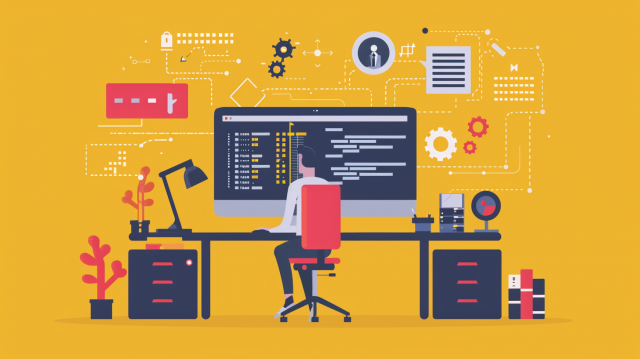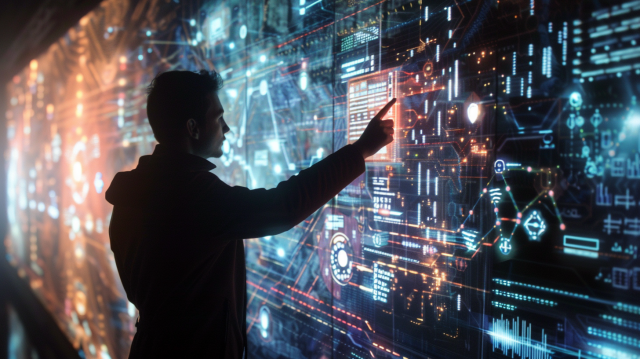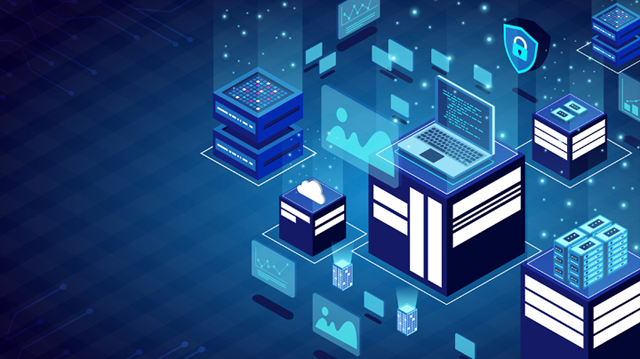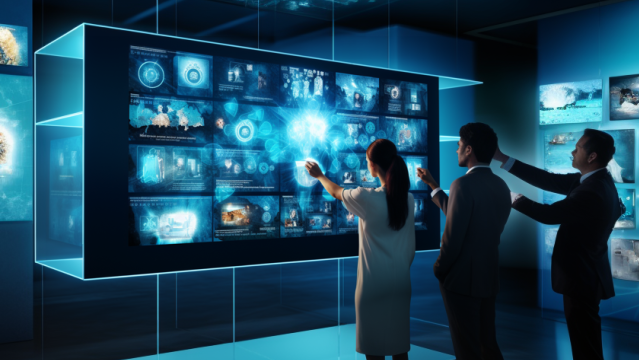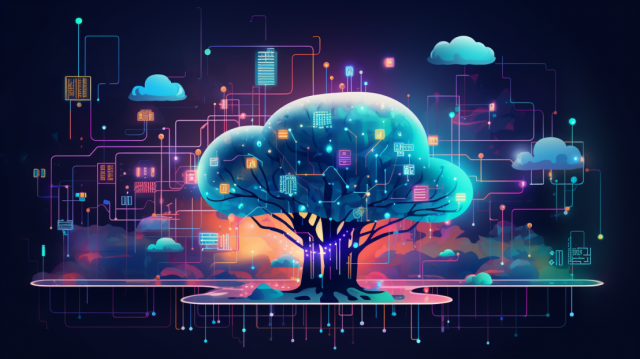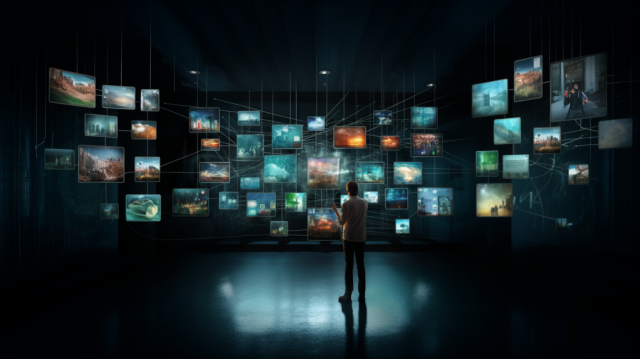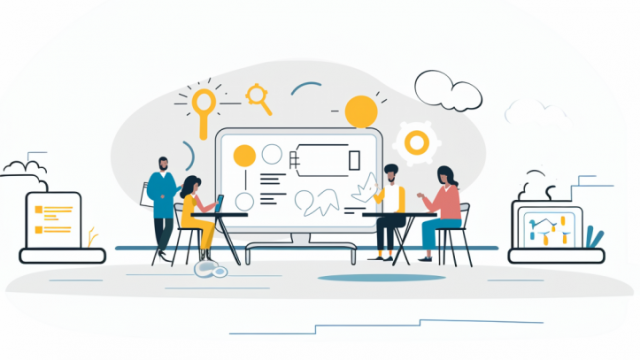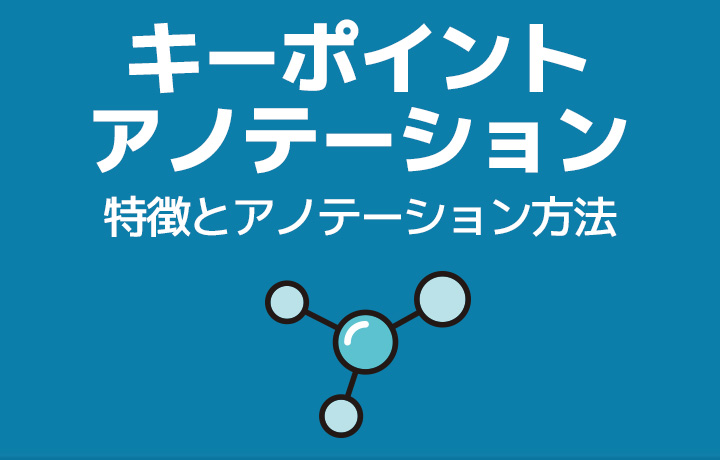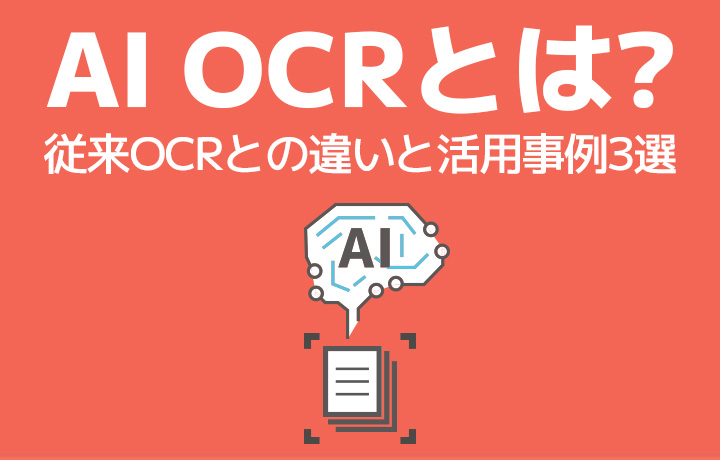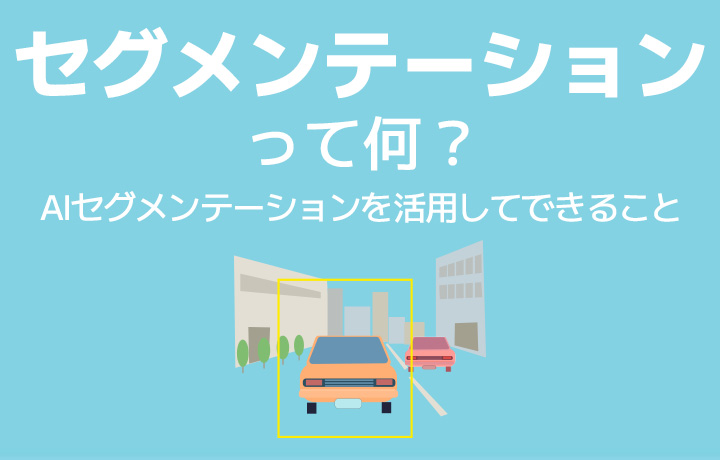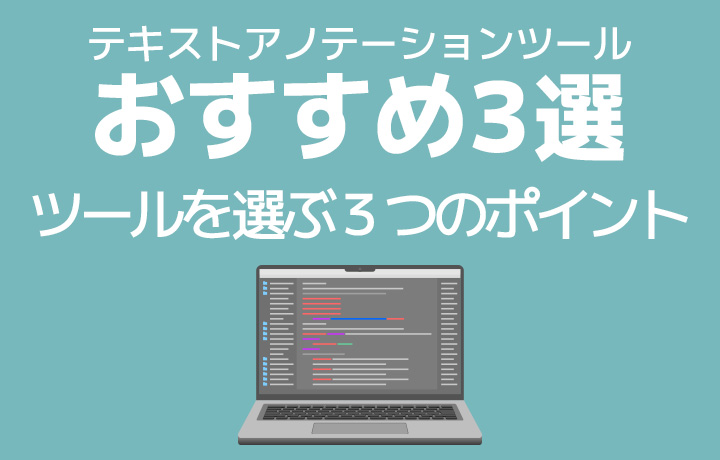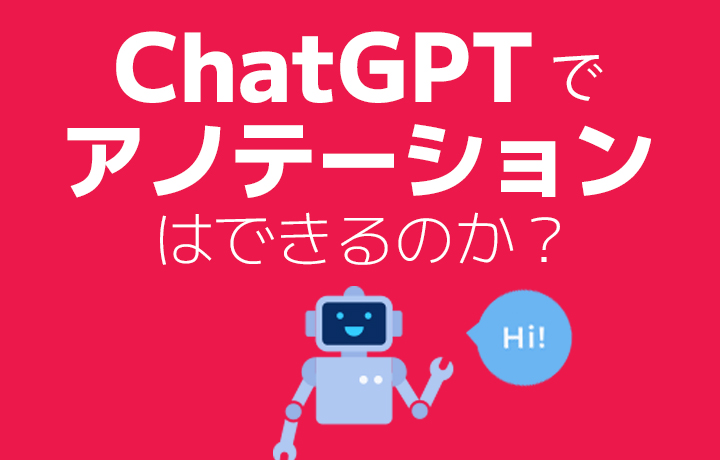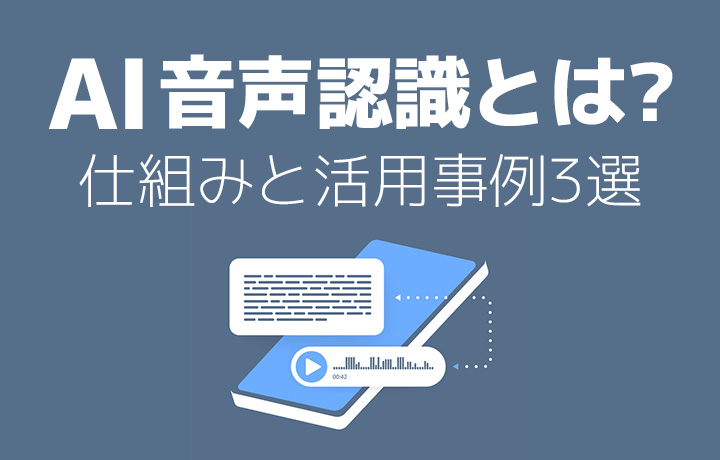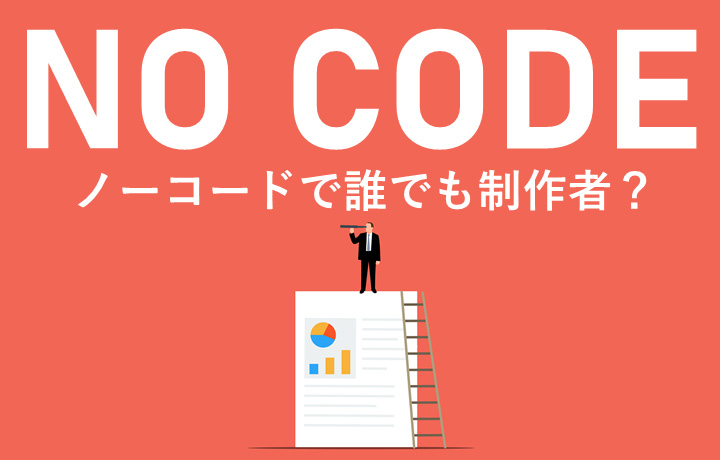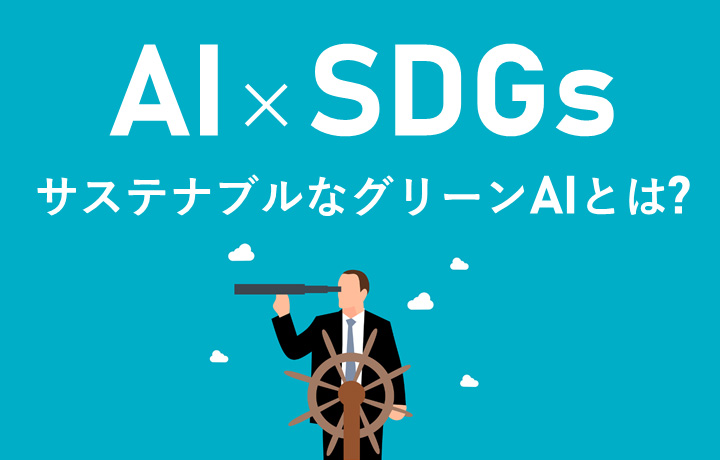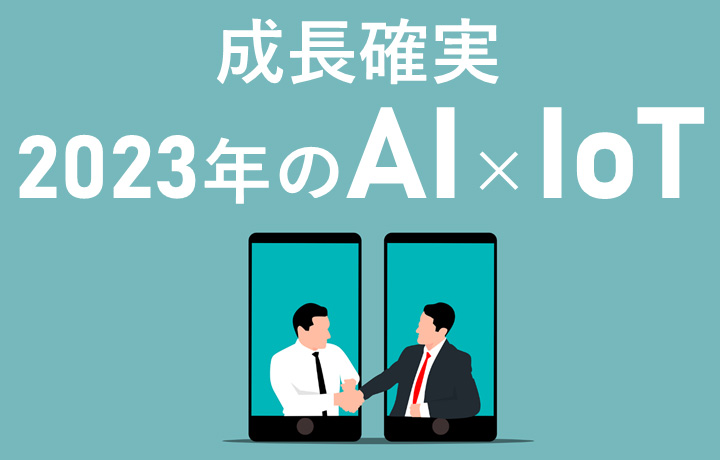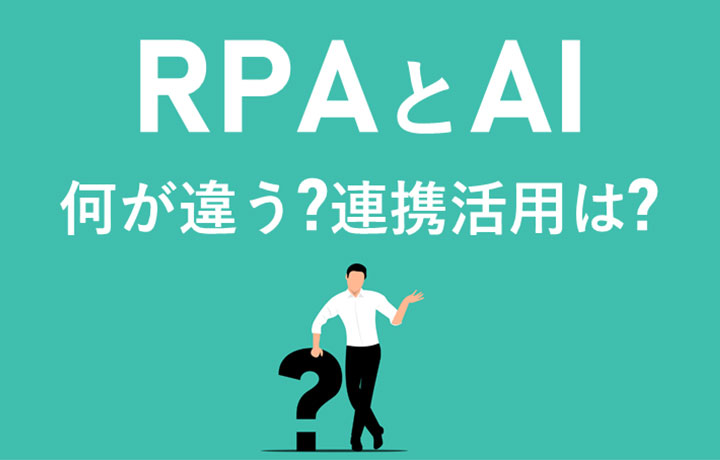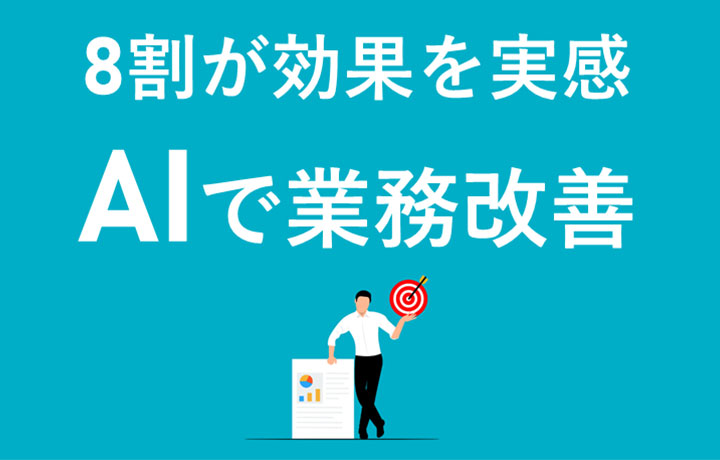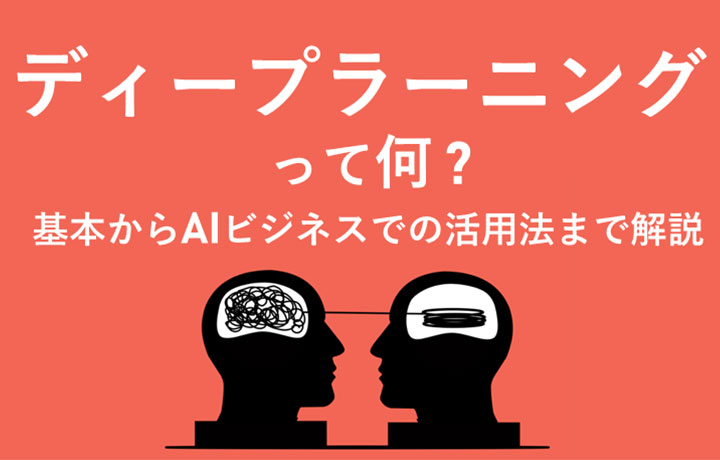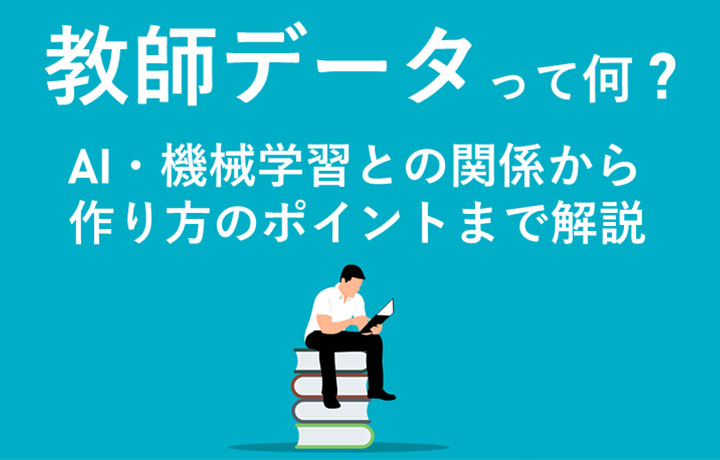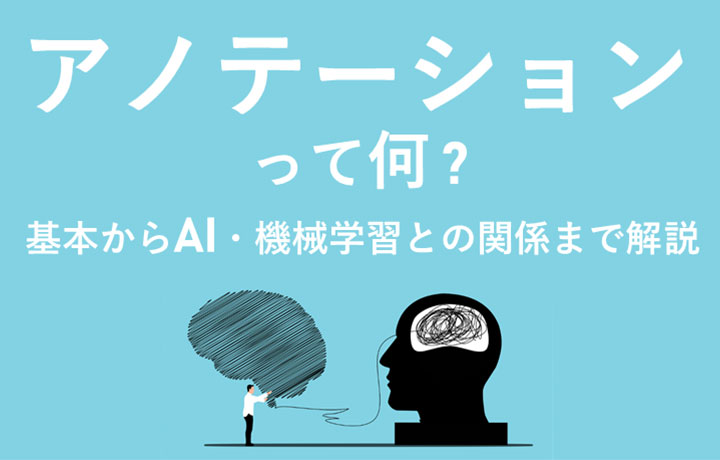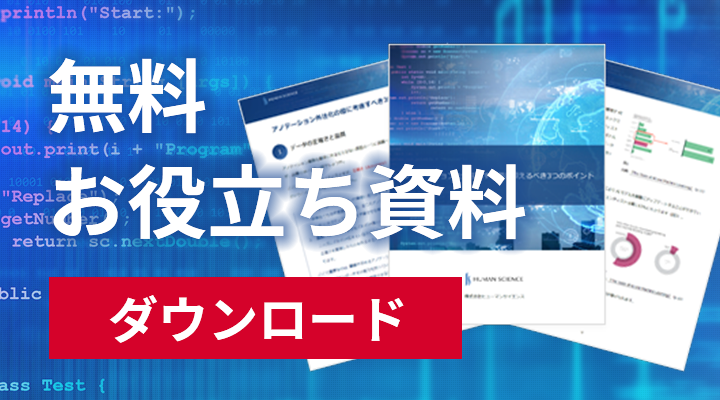
By thinking about what AI can do, we can see how it can be utilized in business.
In this article,
we will introduce industry-specific use cases of what AI can do for those who:
"do not know what tasks to assign to AI"
"do not know how to divide responsibilities between humans and AI"
"do not know what types of tasks are suitable for AI".
- Table of Contents
-
- 1. The Relationship Between AI and Machine Learning
- 1-1. The Relationship between AI, Machine Learning, Training Data, and Annotation
- 2. 12 Examples of Applications by What AI Can Do
- 2-1. Judging by Sight (Image Recognition)
- - Case 1: Autonomous Driving
- - Case 2: Improvement of Public Transportation Convenience
- - Case 3: Medical Support
- - Case 4: Logistics Management
- - Case 5: Inventory Management
- - Case 6: Screening for Equipment Aging
- - Case 7: Automated Document Processing
- 2-2. Listen and Decide (Speech Recognition)
- - Case 8: Music Recognition App
- - Case 9: Predictive Maintenance for Equipment Abnormalities
- 2-3. Using Words (Natural Language Processing)
- - Case 10: AI Assistant
- - Case 11: Help Desk Support
- - Case 12: Translation
- 3. Difficulties with AI
- 3-1. Creative Work
- 3-2. Creative Work
- 3-3. Moral Judgment
- 4. Industry-specific Implementation Status of AI
- 4-1. AI Implementation Status by Industry
- 5. Background of the Current Attention on AI in Japan
- 5-1. Promotion of Work Style Reform
- 5-2. Realizing the Effects of Business Improvement
- 6. Embrace Free Thinking in AI Implementation
- 6-1. AI that Flexibly Changes Work Styles
- 7. For inquiries about AI implementation, contact Human Science
- 7-1. Achievements of 48 million teacher data created
- 7-2. Resource Management Without Using Crowdsourcing
- 7-3. Utilizing the latest data annotation tools
- 7-4. Complete Security Room in Our Company
1. The Relationship Between AI and Machine Learning

1-1. The Relationship between AI, Machine Learning, Training Data, and Annotation
To understand what AI can do, let's first organize how AI works. To operate AI, it is necessary for humans to provide data for it to learn. By repeatedly supplying data that includes information about problems and answers, AI develops the ability to discern patterns and characteristics from that data. This training is called machine learning. Below, we will organize commonly used terms.
AI: Refers to artificial intelligence itself.
Machine Learning: The training for AI to operate.
Training Data: Data used for machine learning.
Annotation: The process of creating training data.
The process of AI development is illustrated in this way.

For information about annotations, click here
>>What are annotations? An explanation from their meaning to their relationship with AI and machine learning.
For information about training data, click here
>> What is training data? An explanation from its relationship with AI, machine learning, and annotation to how to create it.
Examples of business efficiency improvement through AI can be found here
>> Business efficiency improvement through AI. 4 case studies of machine learning projects where 80% experienced effectiveness.
2. 12 Examples of Applications by What AI Can Do
As AI continues to learn and develop judgment capabilities, it becomes possible to delegate various tasks. From here, we will introduce examples of utilization by industry based on what AI can do.
2-1. Judging by Sight (Image Recognition)
You can view images and videos to identify where things are located. It is also possible to track the movement of the subject.
Case 1: Autonomous Driving
In autonomous driving and driving assistance, AI identifies oncoming vehicles, pedestrians, signs, and more from the images captured by onboard cameras. In addition to the conventional 2D methods using standard images, the utilization of 3D data obtained through a technique called LiDAR (Light Detection And Ranging) is also advancing.
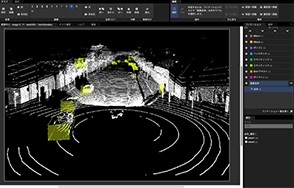
Case 2: Improving the Convenience of Public Transportation
By utilizing AI to understand the usage of public transportation, we enhance passenger safety and convenience.
Recently, there have been efforts to avoid congestion by simulating pedestrian flow and travel time.
>> Hitachi, Ltd. launches service to avoid congestion using AI and simulation technology
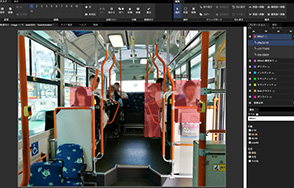
Case 3: Medical Support
AI is being utilized to improve the efficiency of diagnostic operations. The AI extracts areas that appear to be lesions or tumors from images such as X-rays, ultrasounds, and MRIs. By providing preliminary indications, it alleviates the workload of doctors and helps prevent oversight.
The medical image recognition AI announced by Google recognizes lesions and makes diagnoses based on images of skin taken by users with their smartphones.
>> Challenges to the practical application of the medical image recognition AI developed by Google
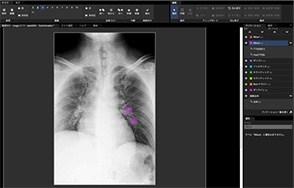
Case 4: Logistics Management
It is used for warehouse management such as inspection and sorting. AI can recognize the quantity of cardboard and the labeling, allowing for automatic sorting. By recognizing the movements of on-site workers, it can also be useful for improving workflow.
Case 5: Inventory Management
In the retail industry, AI is utilized for managing in-store inventory. From images taken of product display shelves, AI can quickly assess the status of stock and out-of-stock items.
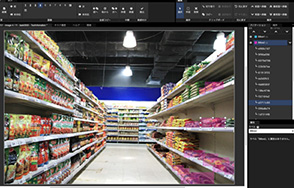
Case 6: Screening for Equipment Aging
This is an example of utilization in the construction and telecommunications industries. AI extracts features such as paint peeling and cracks from images of buildings and equipment. By identifying signs of equipment aging, AI enables maintenance inspections that are more efficient and less prone to oversight than those conducted by humans.
Efforts are also underway to replace visual inspections of transmission towers with AI and drones.
>> Inspection of transmission towers with drones and AI – Deputy Minister Fumiaki Kobayashi of the Digital Agency inspects for regulatory reform
Case 7: Automated Document Processing
We automate the processing of documents such as contract reviews and invoices using AI. By capturing images of documents, AI reads the text and converts it into data, automating the analysis, recording, and calculations of the content. It also supports handwritten characters. This is made possible by a text recognition technology called AI OCR. The same technology can also identify text on route maps and signs seen in the city.
2-2. Listen and Decide (Speech Recognition)
You can listen to the audio and perform identification.
Case 8: Music Recognition App
When the app is launched in a situation where music is playing, information such as the title of the song and the artist's name is displayed. Shazam, a subsidiary of Apple, is a representative example. The AI matches the waveform data of a vast number of songs that it has learned in advance with the audio that is playing, and displays the information when there is a match.
Case 9: Predictive Maintenance for Equipment Abnormalities
AI listens to the operational sounds coming from factory equipment and machinery. By pre-training on the normal sounds, it can detect any unusual noises that deviate from this baseline. It can even sense abnormal sounds at levels that humans might not notice, allowing for early detection of equipment issues.
2-3. Using Words (Natural Language Processing)
It is possible to understand the meanings of words used by humans. Composition and speech by AI are also possible.
Case 10: AI Assistant
This is an AI assistant built into smartphones and smart speakers. The AI extracts the user's intent from spoken voice and responds to requests. It functions through a combination of voice recognition and natural language processing. It is also capable of conversing with users.
Case 11: Help Desk Support
There is an increasing number of cases where AI chatbots respond on behalf of human operators in help desks and customer service. They understand the content of the text input by users and provide appropriate responses.
In call centers, innovations are being made to categorize inquiries into those that are automatically responded to and those that are handled by operators, depending on the content of the inquiry.
>> AI listens to the purpose of the call to the call center, and TMJ provides a voice automated response service
Case 12: Translation
The AI understands the content of sentences inputted through speech or text and translates them into any language. The Google Translate smartphone app can recognize the characters of the object it is pointed at and provide sequential translations. This is an example of the combination of AI OCR technology that extracts text from objects, natural language processing of that content, and AI translation technology.
3. Difficulties with AI
We have seen examples of AI utilization up to this point. It is clear that things previously thought to be difficult for machines to achieve are now possible. However, there are still some things that are difficult for AI to accomplish.
3-1. Creative Work
AI learns based on the data provided to achieve its goals. This is the same for generative AI like ChatGPT that generates text and images. While it may seem that AI comes up with new ideas or creates previously unseen creative works, in reality, these are generated by algorithms based on past data. Humans perform creative tasks based on intuition and unique experiences, such as "inspiration," but AI does not possess such abilities. However, it is a highly capable tool for complementing human creativity.
3-2. Moral Judgment
AI does not possess ethical judgment or moral sense. If the training data contains biases or discriminatory elements, AI will learn them uncritically. Therefore, it is up to humans to examine the training data from ethical and moral perspectives and make necessary corrections.
3-3. Understanding Human Emotions
AI does not have emotions. Conversational AI can generate probabilistic responses to the text input by users, but this does not mean that the AI itself understands emotions or engages in emotional dialogue. It is important to note that AI is merely a program and cannot possess emotions or consciousness.
4. Industry-specific Implementation Status of AI

4-1. AI Implementation Status by Industry
This is data that investigates the implementation status of AI by industry.
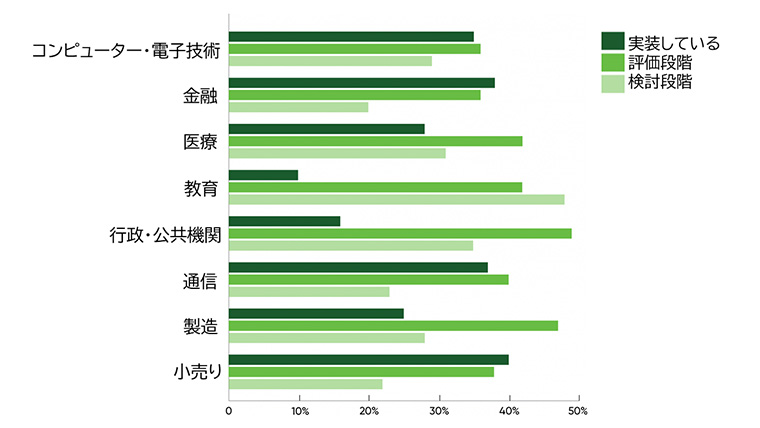
Source: Created by the author from O'Reilly AI Adoption in the Enterprise 2021
The implementation of AI is already progressing in the computer, finance, and retail industries. In the fields of education and government, the implementation rate seems to be still low compared to the proportion in the consideration and evaluation stages. Particularly in these areas, it is anticipated that ethical considerations such as handling personal information, social roles, and environmental concerns will be challenges to address before implementation.
5. The Background of AI's Growing Attention in Japan

The following factors are behind the growing attention to the introduction of AI in Japan.
5-1. Promotion of Work Style Reform
By having AI take care of simple and time-consuming tasks, humans can dedicate their time to creative work such as planning and learning in new fields. With the promotion of work style reform, the demand for AI is expected to increase further in the future.
5-2. Realizing the Effects of Business Improvement
This is the result of a survey conducted on Japanese companies that have implemented AI, regarding their perceived effects.
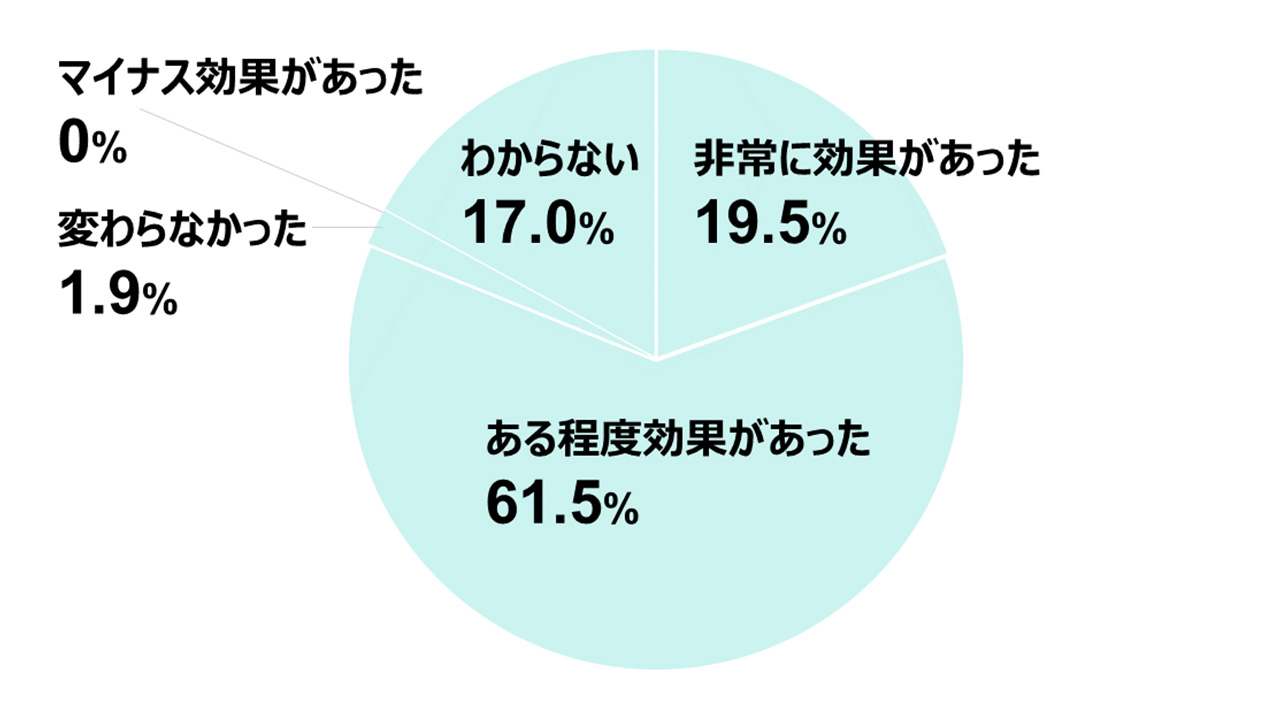
Source: Created by the author based on the 2021 White Paper on Information and Communications by the Ministry of Internal Affairs and Communications
More than 80% of companies responded that it was "very effective" or "somewhat effective." There were zero companies that reported negative effects. It can be said that there is clearly a growing positive mood towards the introduction of AI.
6. Embrace Free Thinking in AI Implementation
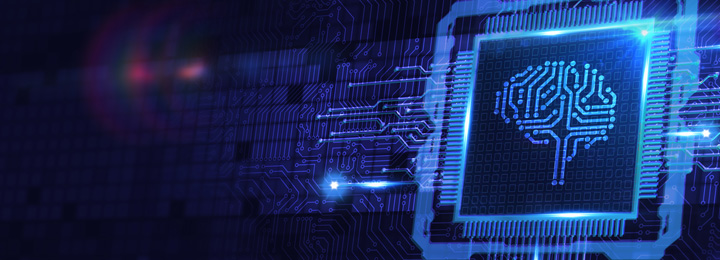
6-1. AI that Flexibly Changes Work Styles
AI expands its potential by combining various methods. The 12 use cases introduced this time are just a small part of the possibilities that AI holds. Originally, AI is designed to flexibly adapt its functionality to human needs. Let's consider the introduction of AI from a perspective of free thinking, imagining what kind of AI would be beneficial, without being constrained by industries or past examples.
7. For inquiries about AI implementation, contact Human Science
7-1. Achievements of 48 million teacher data created
"I want to implement AI, but I don't know where to start."
"I don't know what to request even if I want to outsource."
In such cases, please consult Human Science. Human Science participates in AI development projects across various industries, including natural language processing, medical support, automotive, IT, manufacturing, and construction. Through direct transactions with many companies, including GAFAM, we have provided over 48 million high-quality training data. We handle a variety of annotation projects, from small-scale projects to long-term large-scale projects with 150 annotators, regardless of the industry.
7-2. Resource Management Without Using Crowdsourcing
At Human Science, we do not use crowdsourcing. Instead, projects are handled by personnel who are contracted with us directly. Based on a solid understanding of each member's practical experience and their evaluations from previous projects, we form teams that can deliver maximum performance.
7-3. Utilizing the latest data annotation tools
One of the annotation tools introduced by Human Science, AnnoFab, allows customers to receive progress checks and feedback from the cloud even during the project. By ensuring that work data cannot be saved on local machines, we also take security into consideration.
7-4. Complete Security Room in Our Company
Human Science has a security room that meets ISMS standards within our Shinjuku office. We can handle even highly confidential projects on-site. We consider the assurance of confidentiality to be extremely important for any project. Our staff undergoes continuous security training, and we exercise the utmost care in handling information and data, even for remote projects.

 For the medical industry
For the medical industry For the automotive industry
For the automotive industry For the IT industry
For the IT industry